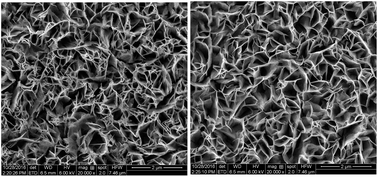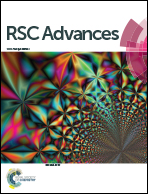An electrochemical sensor based on Co3O4 nanosheets for lead ions determination†
Abstract
In this work, Co3O4 nanosheets were fabricated on indium tin oxide (ITO) substrates by developing a simple electrochemical deposition and annealing method. The as-prepared Co3O4 nanosheets were characterized by scanning electron microscopy (SEM), X-ray diffraction (XRD), attenuated total reflection infrared (ATR-IR) spectroscopy and Raman spectroscopy. The Co3O4 nanosheets modified ITO electrode was used for the electrochemical analysis of various trace lead ions by differential pulse anodic stripping voltammetry. The electrode was found to be highly selective to Pb(II) in the range of 1–100 μg L−1, and exhibited a sensitive current response with a limit of detection (LOD) of 0.52 μg L−1. Furthermore, the developed electrochemical Pb(II) sensor exhibited a high stability and reproducibility with a simple regeneration process.



 Please wait while we load your content...
Please wait while we load your content...